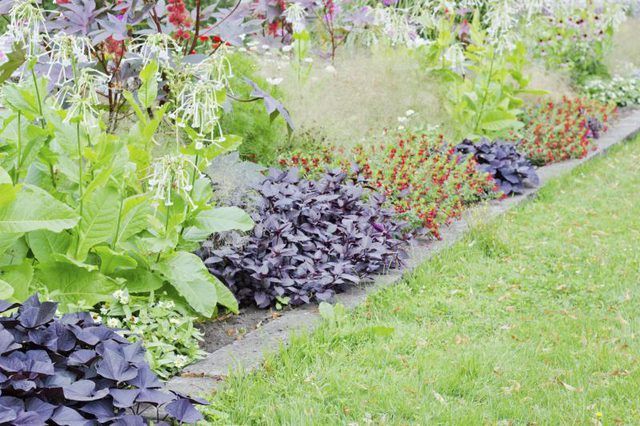Bulbs
Flower Basics
Flower Beds & Specialty Gardens
Flower Garden
Garden Furniture
Garden Gnomes
Garden Seeds
Garden Sheds
Garden Statues
Garden Tools & Supplies
Gardening Basics
Green & Organic
Groundcovers & Vines
Growing Annuals
Growing Basil
Growing Beans
Growing Berries
Growing Blueberries
Growing Cactus
Growing Corn
Growing Cotton
Growing Edibles
Growing Flowers
Growing Garlic
Growing Grapes
Growing Grass
Growing Herbs
Growing Jasmine
Growing Mint
Growing Mushrooms
Orchids
Growing Peanuts
Growing Perennials
Growing Plants
Growing Rosemary
Growing Roses
Growing Strawberries
Growing Sunflowers
Growing Thyme
Growing Tomatoes
Growing Tulips
Growing Vegetables
Herb Basics
Herb Garden
Indoor Growing
Landscaping Basics
Landscaping Patios
Landscaping Plants
Landscaping Shrubs
Landscaping Trees
Landscaping Walks & Pathways
Lawn Basics
Lawn Maintenance
Lawn Mowers
Lawn Ornaments
Lawn Planting
Lawn Tools
Outdoor Growing
Overall Landscape Planning
Pests, Weeds & Problems
Plant Basics
Rock Garden
Rose Garden
Shrubs
Soil
Specialty Gardens
Trees
Vegetable Garden
Yard Maintenance
How to Grow an Ornamental Sweet Potato Vine
How to Grow an Ornamental Sweet Potato Vine. Ornamental sweet potato vines (Ipomoea batatas) share more than a name with the orange-fleshed vegetables that grace dinner tables. Ornamental and common sweet potatoes are the same plant species. All are tender perennials in U.S. Department of Agriculture plant hardiness zones 9 through 11, but the...

Ornamental sweet potato vines (Ipomoea batatas) share more than a name with the orange-fleshed vegetables that grace dinner tables. Ornamental and common sweet potatoes are the same plant species. All are tender perennials in U.S. Department of Agriculture plant hardiness zones 9 through 11, but the ornamental varieties traded in tasty tubers for flashy foliage. Grown as colorful annuals in all climates, the easy-care ornamentals demand little attention but offer chartreuse, bronze, deep purple, red or tricolor leaves in return.
Sun and Soil
Ornamental sweet potato vines put on their brightest show in full-sun locations. The heat-tolerant plants can handle light shade, but their colorful foliage fades to green without sun. In the hottest climates, give the vines filtered shade and protection from the sun's harshest rays. Ornamental sweet potatoes do best with soil pH between 6.0 and 6.5. They adapt to a wider pH range, but they struggle in alkaline soil above 8.0. Give the plants fertile, well-drained soil, high in organic matter. As with table-destined sweet potatoes, it's best to rotate the vines to new locations or new soil each season to prevent soil-borne fungal disease.
Watering and Fertilizer
Ornamental sweet potatoes prefer consistent moisture but don't like soggy tubers. Water the plants deeply, and then allow the soil to dry out slightly before watering again. The vines tolerate drought, but don't let them dry to the point of wilting. If they wilt, water promptly. The vines rebound quickly, but you may lose some colorful leaves. Many gardeners don't fertilize these exuberant growers. To stimulate growth, use a balanced, water-soluble, all-purpose fertilizer once a month at most. One 20-20-20 fertilizer brand recommends 1/2 teaspoon of fertilizer mixed with 1 gallon of water and applied to the foliage and the soil. If you fertilize, wear gloves and protective eyewear as you work.
Spacing and Vigor
Older varieties of ornamental sweet potatoes are known for extreme vigor. Growth speeds up when temperatures top 85 degrees Fahrenheit, but 110 F can damage plants. Most varieties stay below 12 inches tall, but they vine for 10 feet or more and send down roots wherever stem nodes touch the soil. Their crop of large, underground storage tubers can lift plants from soil or break through containers. The chartreuse "Marguerite" (Ipomoea batatas "Marguerite," USDA zones 9 through 11), one of the original ornamental sweet potatoes, produces soccerball-sized storage tubers. Newer cultivars from the Sweet Caroline and Illusion series, also hardy in USDA zones 9 through 11, have compact growth and smaller root systems. Plant large, vigorous vine varieties 3 to 6 feet apart. Space compact growers at 2-foot intervals.
Winter Options
When grown outdoors in USDA zone 9 -- where winter temperatures routinely drop below 32 F -- ornamental sweet potatoes die back but return from the roots. An extra layer of mulch helps assure their survival. In colder zones, they won't survive outside, but they can overwinter indoors. Dig the tubers after the first hard frost. Though edible, the tubers are no match for their sweet siblings when it comes to flavor. Instead, cover them with slightly damp peat moss, and store them in a cool, well-ventilated place for spring planting. Container-grown vines can winter in their pots. Reduce watering to once per month, and move the plant to a cool area where temperatures stay near 50 to 55 F. Move ornamental sweet potato vines back outdoors once nighttime spring temperatures stay reliably above 50 F.